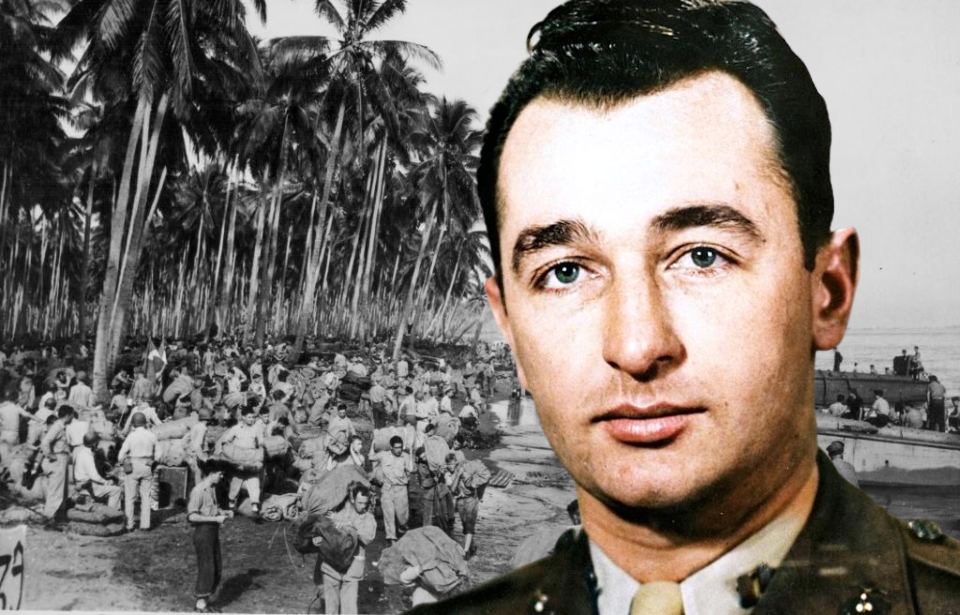The valor exhibited in World War II went beyond mere bravery, as an incredible 473 American service members were awarded the Medal of Honor for their extraordinary actions in combat. Among these remarkable individuals was Sgt. Mitchell Paige, a US Marine. During the Guadalcanal Campaign, he courageously confronted the enemy, overcoming huge challenges and emerging victorious.
Mitchell Paige’s entry into the US Marine Corps
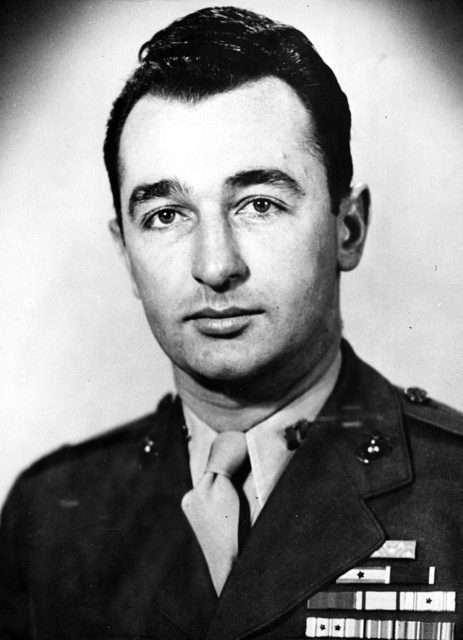
Mitchell Paige was born on August 31, 1918, in Charleroi, Pennsylvania. His interest in the US military began at an early age, with him eagerly awaiting the annual Armistice Day parade in his hometown, in which veterans of the First World War. marched. With a deep-seated respect for the Armed Forces, it came as no surprise that, upon turning 18, he enlisted in the US Marine Corps.
After completing basic training at the Marine Corps Recruit Depot, Parris Island, Paige’s journey led him to Quantico, Virginia, where he served with Company H, 2nd Battalion, 5th Marine Regiment, 1st Marine Division. During this period, he served as a gunner aboard the USS Wyoming (BB-32) during exercises off the California coast.
Paige continued in this role until February 1937, when he was transferred to Mare Island Navy Yard for guard duty, followed by a posting to Cavite, in the Philippine Islands. From October 1938 to September ’39, he was stationed in China, guarding American interests. Upon returning to the United States, he performed similar duties at the Brooklyn and Philadelphia Navy Yards.
In September 1940, Paige rejoined the 5th Marine Regiment for exercises in Cuba, Puerto Rico and Guantanamo Bay, before being redeployed to the US to aid in the construction of what would later become Marine Corps Base Camp Lejeune.
Manning four machine guns on Guadalcanal
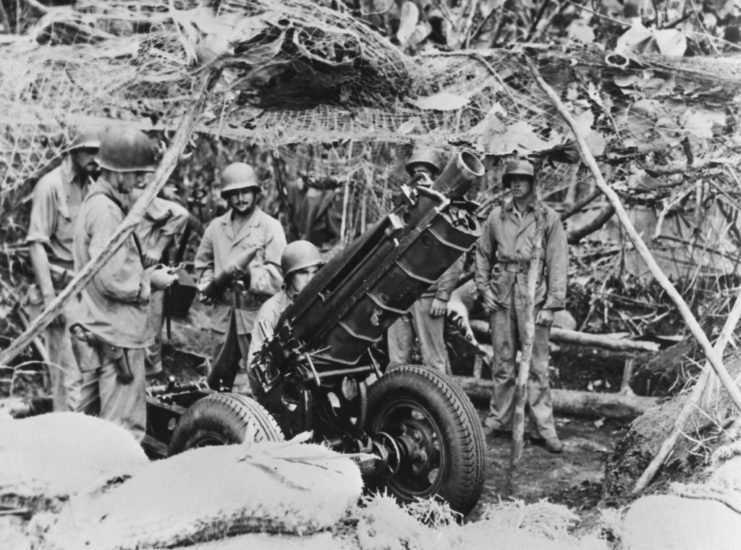
In the aftermath of the Japanese attack on Pearl Harbor in December 1941, Mitchell Paige was deployed to Apia, British Samoa, with the 7th Marine Regiment. In September of the next year, he and his fellow soldiers arrived on Guadalcanal, engaging in the inaugural large-scale land offensive conducted by American forces against the Japanese.
“By the time I got to Guadalcanal, I’d been a machine-gunner for six years,” he recounted when talking to the Marine Corps Association. “I was a platoon sergeant, and I required every Marine in my platoon to be able to fieldstrip the water-cooled machine gun, the 1903 Springfield rifle and the .45-caliber pistol. They could do it blindfolded; take it apart and put it back together. Every man.”
During the Battle for Henderson Field on October 26, 1942, Paige and his men were stationed on a saddle hill, between the F and G companies of the 2nd Battalion, 7th Marine Regiment. Around 2:00 AM, he detected the sounds of enemy soldiers conversing approximately one hundred yards away, prompting him to prepare his men for an imminent attack.
As Japanese-manned howitzers unleashed artillery fire on their position, Paige’s platoon of 33 faced an overwhelming force of an estimated 2,700 Japanese soldiers. At the risk of being overrun, the Marine, resolute in his defense of the ridge, single-handedly operated the company’s four machine guns and called for reinforcements. When the machine guns were rendered inoperable, he led a bayonet charge against the remaining enemy troops, despite lacking sufficient men for the maneuver.
Fortunately, the Japanese were unaware of this shortage and were ultimately repelled.
“I was so wound up at this point, I couldn’t stop,” he recalled. “I yelled back to the riflemen, ‘Fix bayonets; follow me.’ I threw two belts of ammo over my shoulders, unclamped the machine gun, picked it up and cradled it in my arms after loading it.”
Mitchell Paige was presented with the Medal of Honor
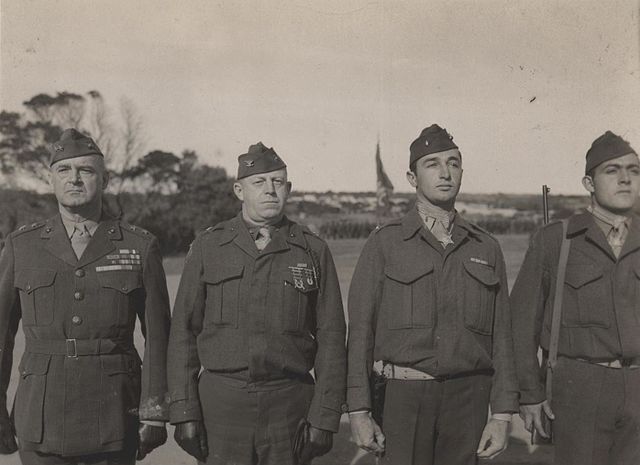
Mitchell Paige’s service extended to January 1943, predominantly stationed on Guadalcanal. Following his promotion to second lieutenant, he was reassigned to Melbourne, Australia, accompanying the 1st Marine Division.
During his tenure there, General Alexander A. Vandegrift honored him with the Medal of Honor. Vandegrift acknowledged Paige as “the first enlisted Marine in my division to be awarded this medal.” As reported by SFGate, Paige humbly replied, “This Medal of Honor belongs to all 33 men in my platoon on Guadalcanal.”
In September 1943, Paige relocated with his division to New Guinea, engaging in the Battle of Cape Gloucester with the command of the US Sixth Army. By May of the following year, the 1st Marine Division was stationed at the Russell Islands, in Pavuvu. However, Paige returned to the United States for duty assignments at Camp Lejeune.
During his tenure stateside, Paige rose to the rank of captain. Following this advancement, he assumed the position of Tactical Training Officer at Camp Calvin B. Matthews, subsequently serving as a recruit training officer at the Marine Corps Recruit Depot, San Diego.
Remaining in the United States during the Korean War
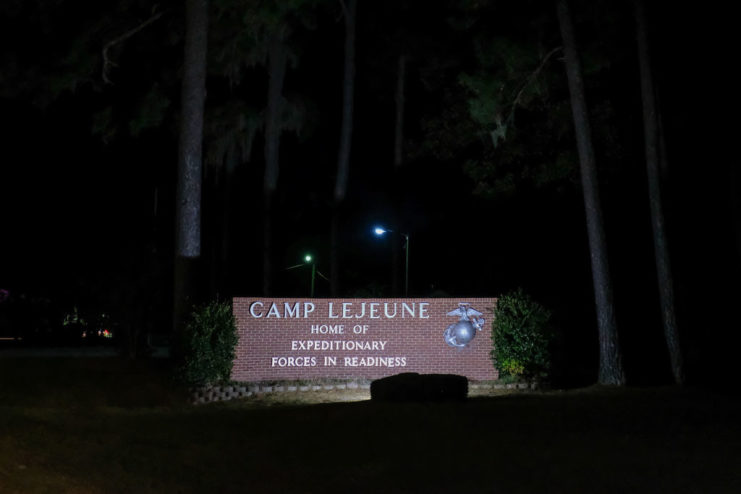
After the Second World War, Mitchell Paige transitioned to inactive duty, but he was reactivated four years later when the Korean War began. Although he didn’t serve overseas during the war, he took on a variety of assignments, moving between different Marine Corps facilities across the United States.
From 1950 to 1957, Paige occupied several roles, such as Plans and Operations Officer of the 2nd Recruit Training Battalion at the Marine Corps Recruit Depot; division recruiting officer with the 2nd Marine Division at Camp Lejeune; and officer in charge at the Division Non-Commissioned Officers School with Sub-Unit #2, Headquarters Company, Headquarters Battalion, 3rd Marine Division in San Francisco.
In May 1959, Paige, now a lieutenant colonel, joined the US Army Language School in California before relocating to the Marine Barracks at the US Naval Station in San Diego, where he became the executive officer. A few months later, he was placed on the Marine Corps Disability Retired List, concluding his military career. He was elevated to the rank of colonel for his commendable performance in combat.
Mitchell Paige protected the integrity of the MoH until his death
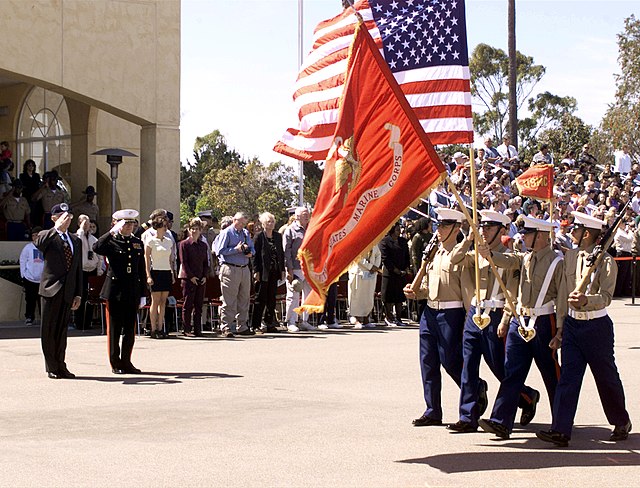
Although Mitchell Paige didn’t serve in the Vietnam War, he served as an advisor during high-powered rocket testing. In 1975, prompted by actor and fellow Marine Lee Marvin, he penned a memoir, A Marine Named Mitch: An Autobiography Of Mitchell Paige, Colonel, U.S. Marine Corps Retired. The book fast became a favorite among the military branch and was included in its Professional Reading Program.
Paige’s public presence expanded further. In 1998, he served as the model for the Marine Corps character in a series of G.I. Joe action figures honoring Medal of Honor recipients from the US military.
As a Medal of Honor recipient, Paige was dedicated to upholding the significance of the award. In his later years, he collaborated with the FBI to expose imposters selling or wearing the medals, advocating for stricter penalties. Reflecting on this effort with Newsday, he remarked, “I couldn’t arrest these guys before I got together with the FBI, but I scared the hell out of them and even got some of the medals back.”
Paige passed away on November 15, 2003, at his residence in La Quinta, California, succumbing to congestive heart failure at the age of 85. He was laid to rest at Riverside National Cemetery with a ceremony that honored his service with full military honors.
More from us: Al Schmid: The US Marine Who Continued to Man His Machine Gun After Taking a Grenade to the Face
The museum at Marine Corps Air Ground Combat Twentynine Palms pays homage to Paige, serving as a testament to his legacy. As well, the Eldrid World War II Museum in Pennsylvania has an exhibit dedicated to him, aptly named “Mitchell Paige Hall,” which showcases his Medal of Honor and other memorabilia that were generously contributed by him before his death.
